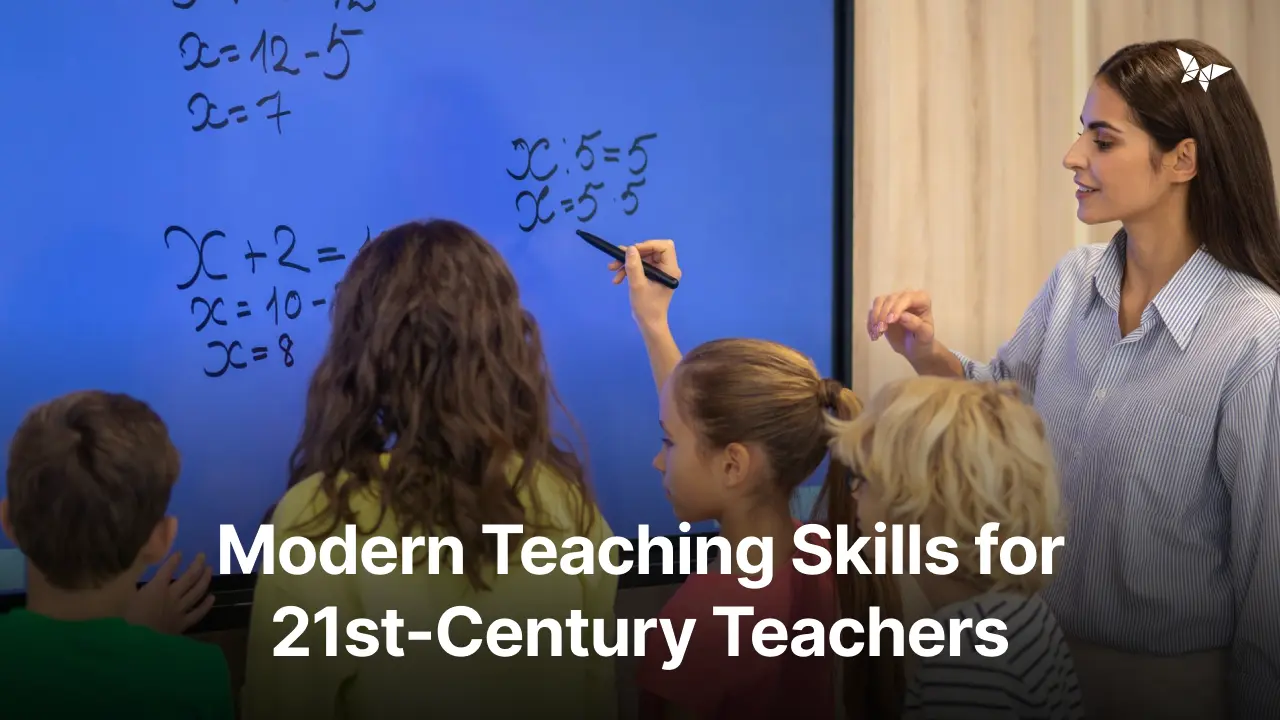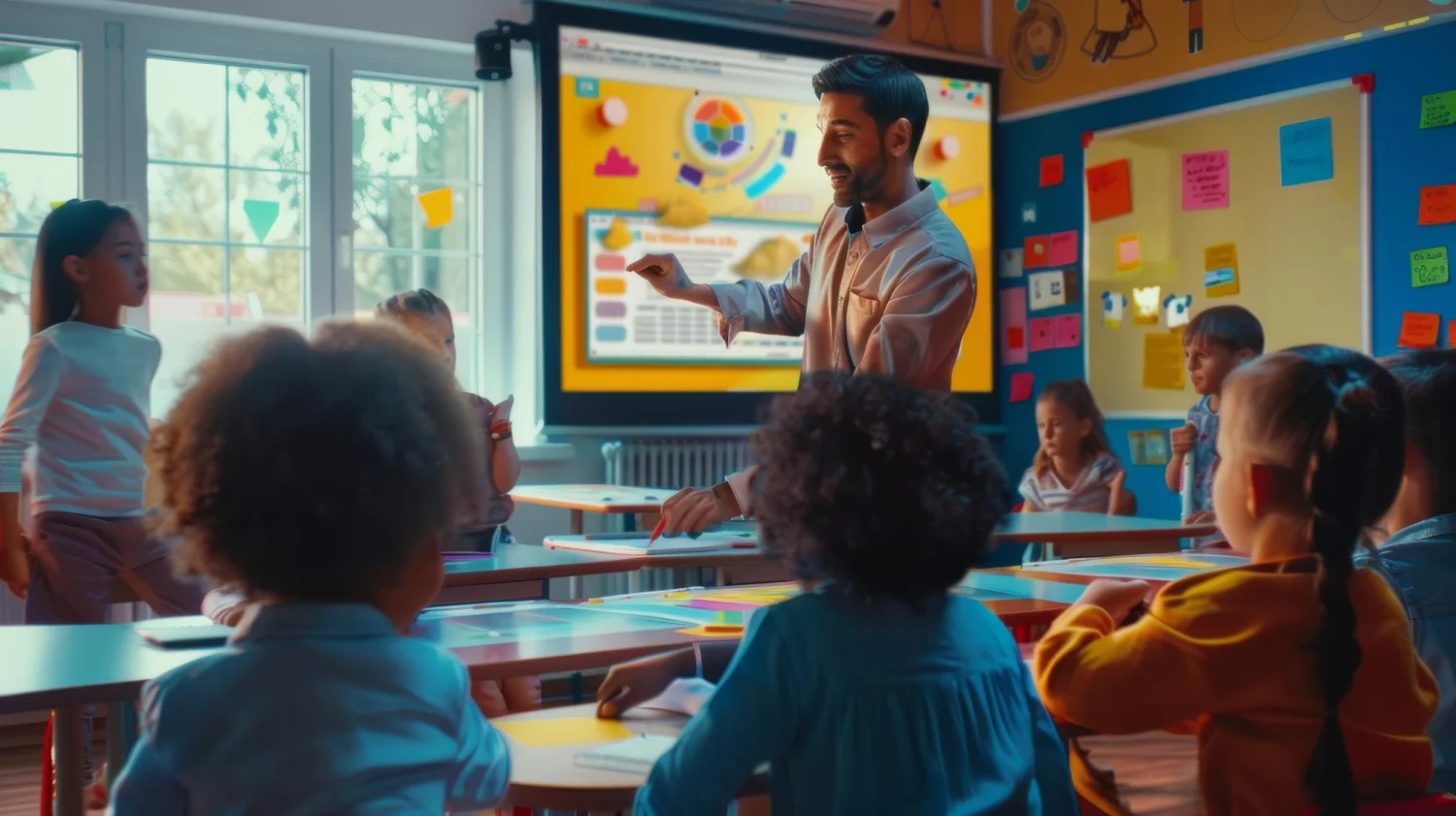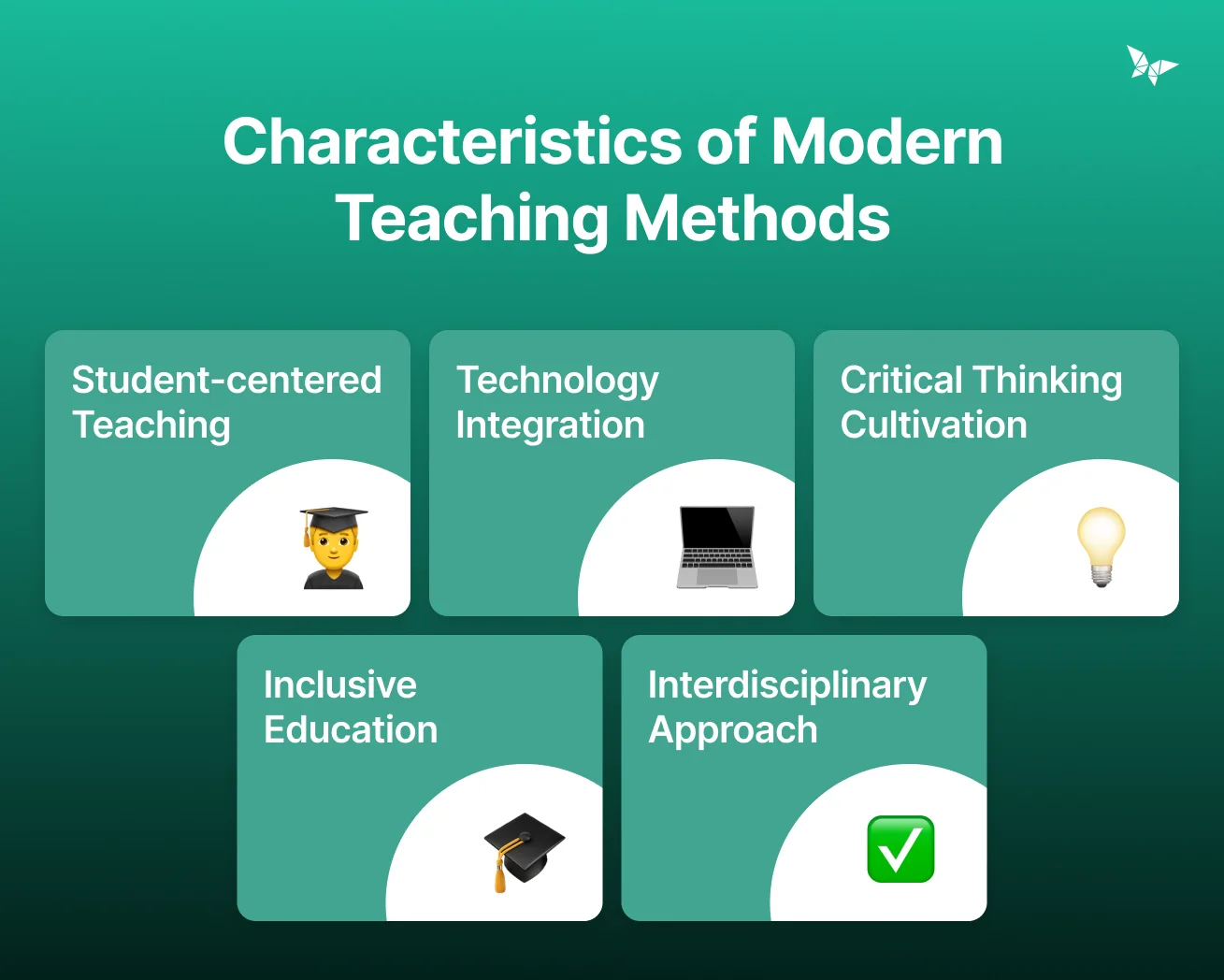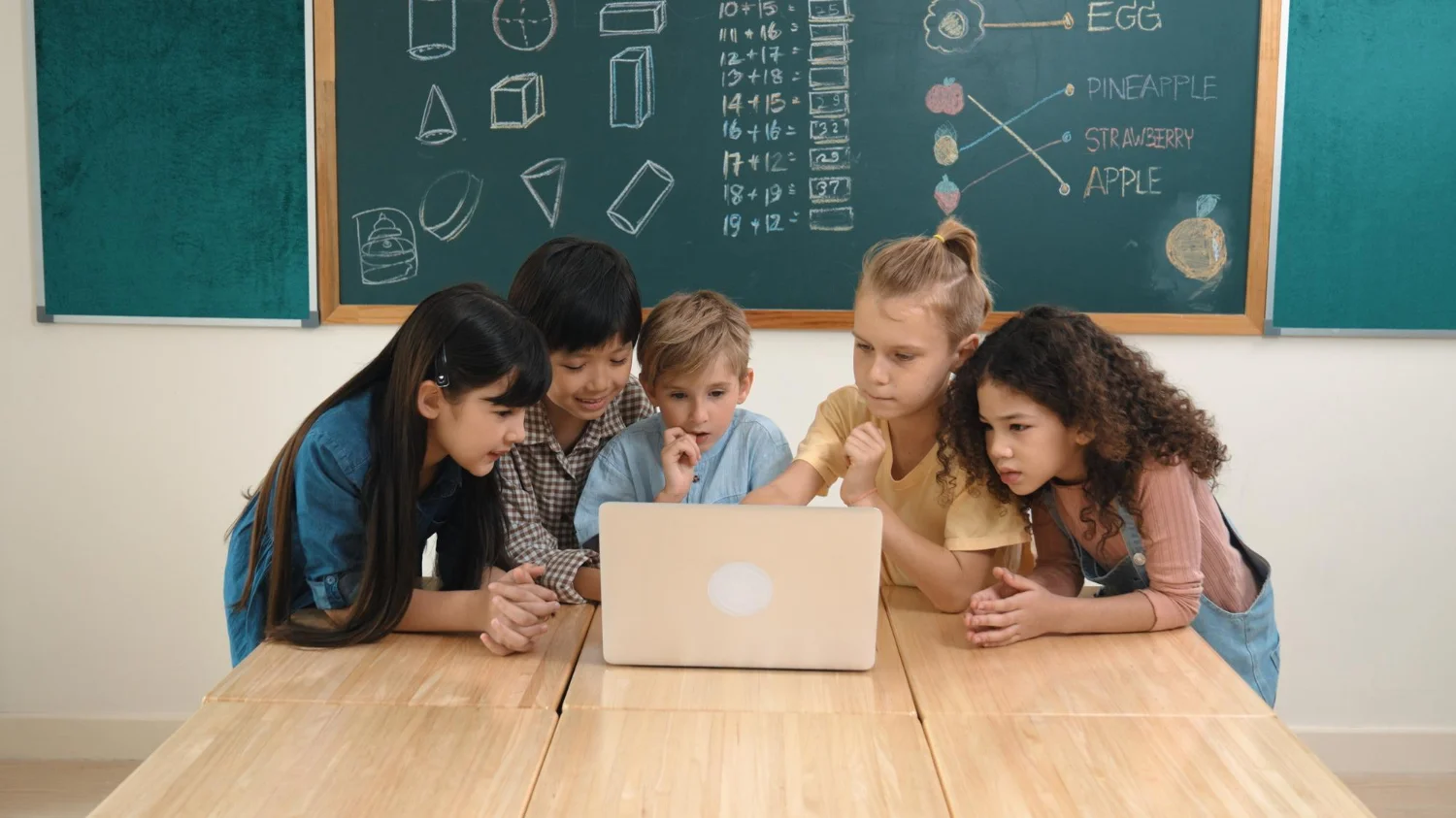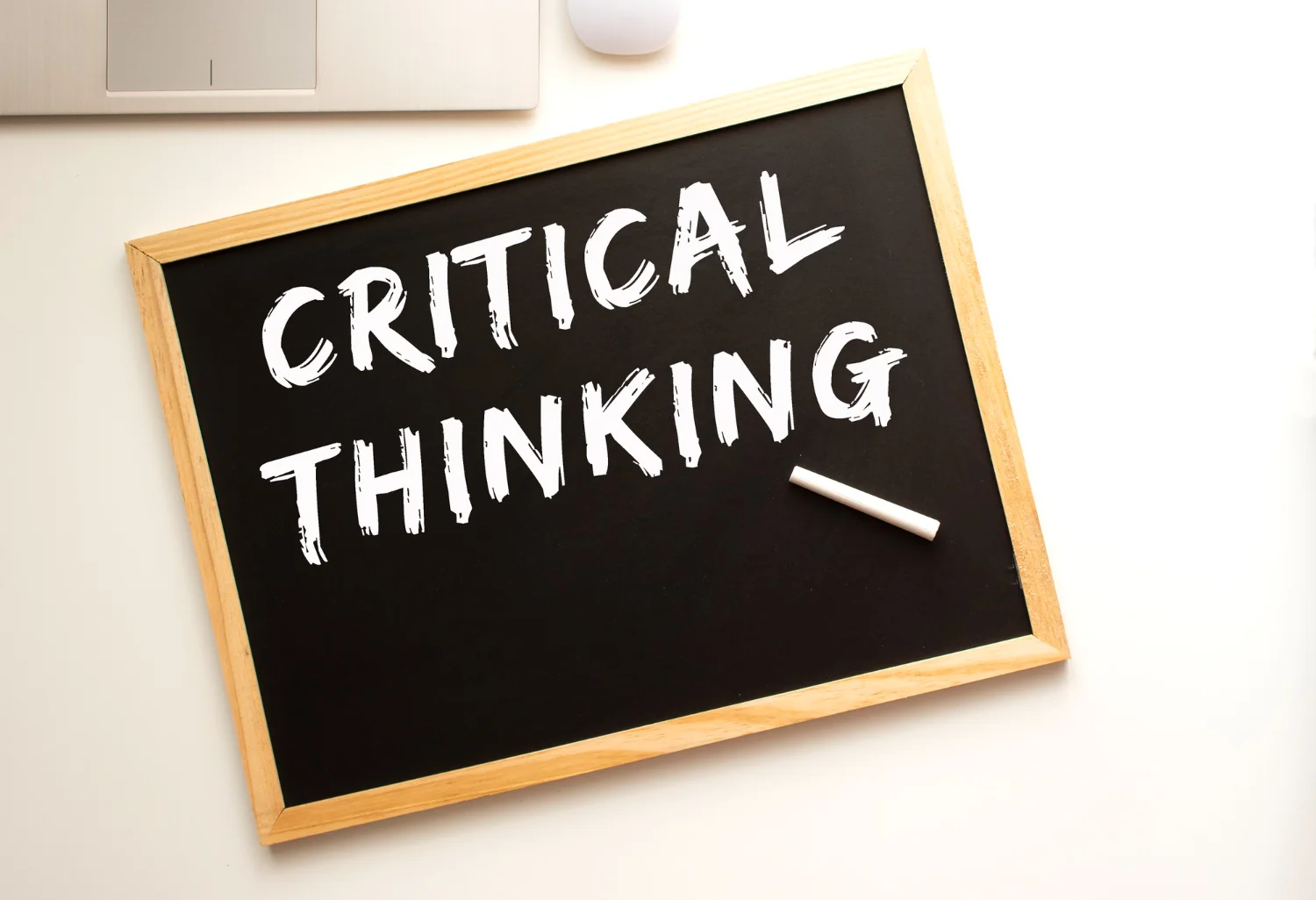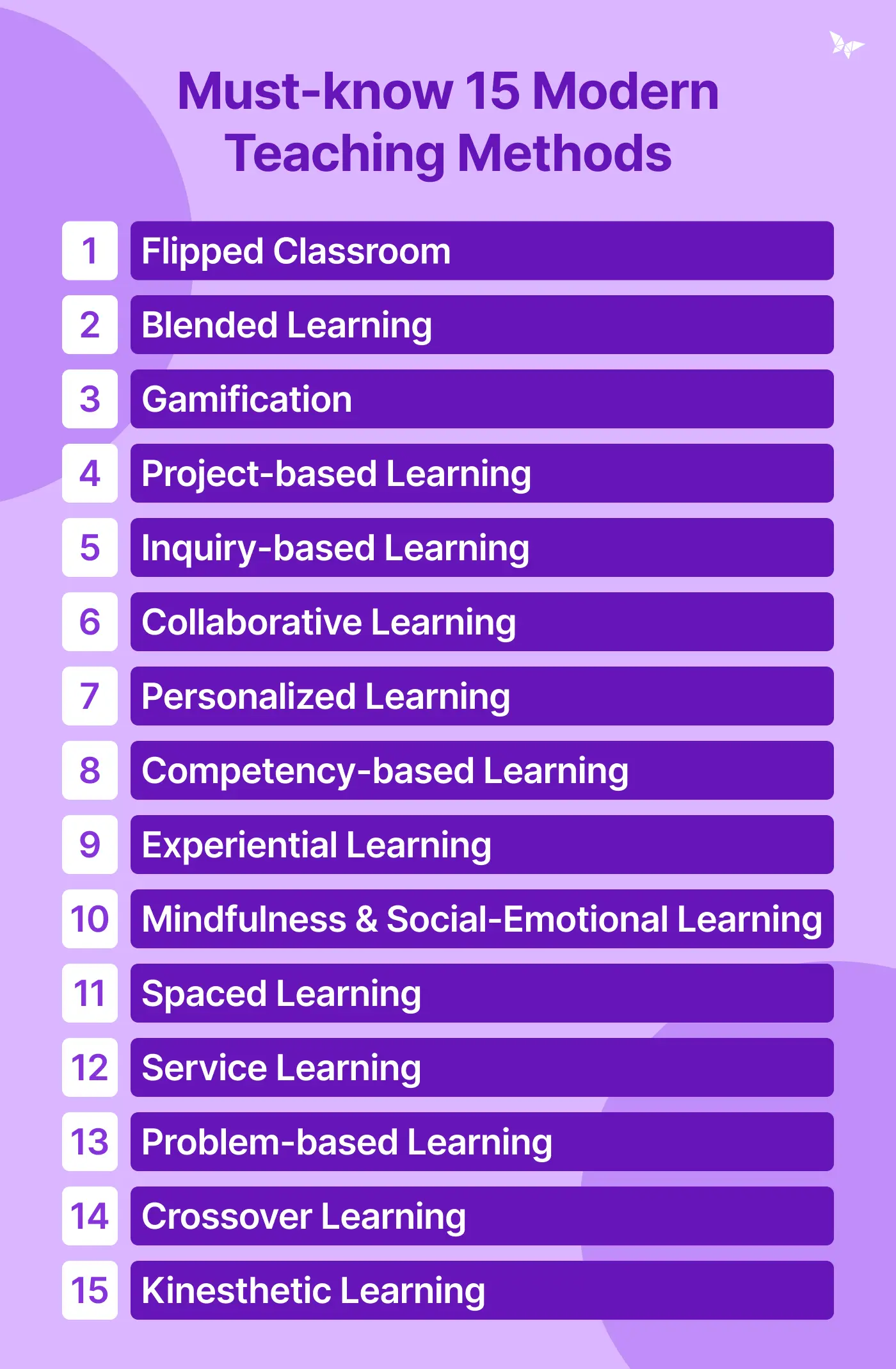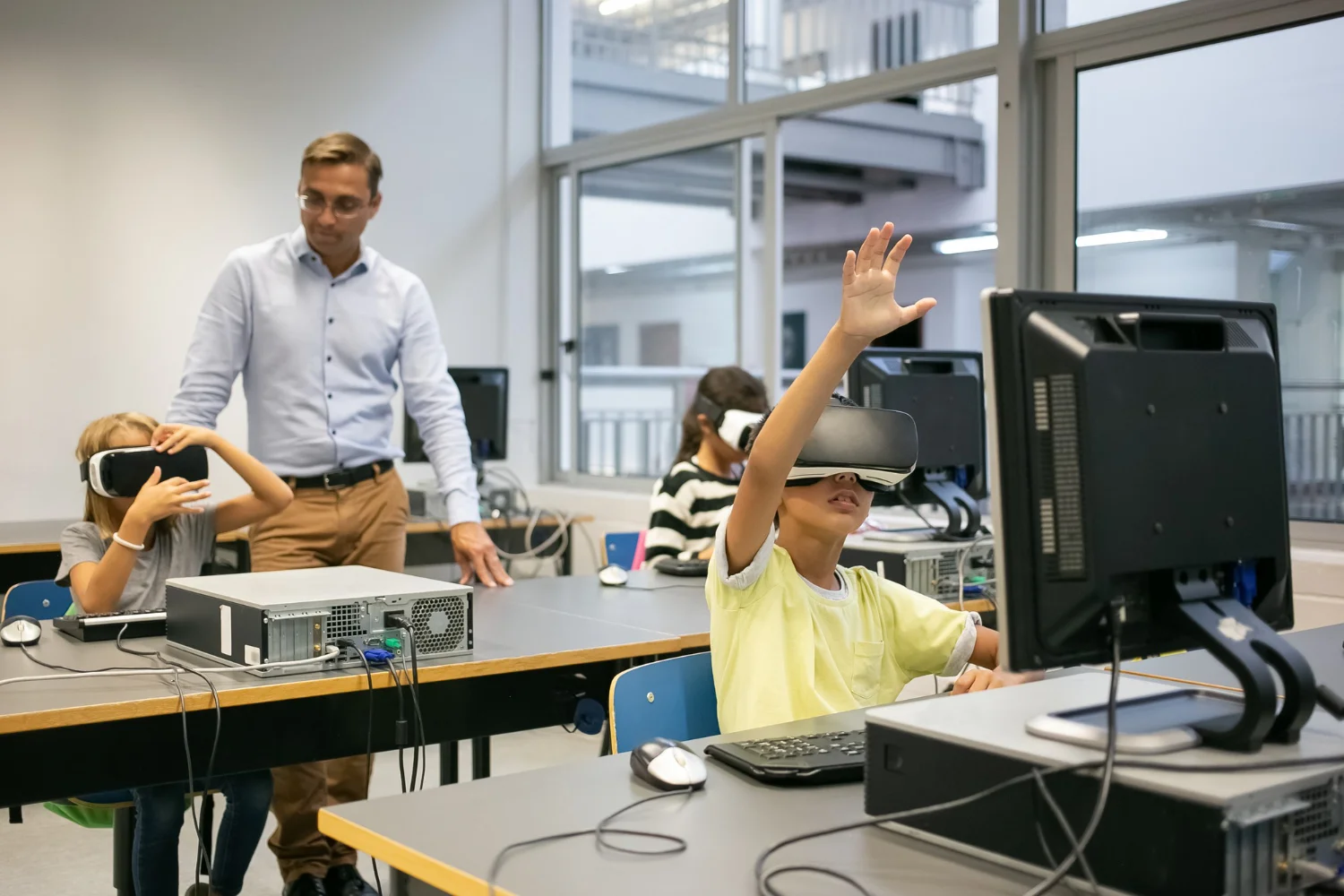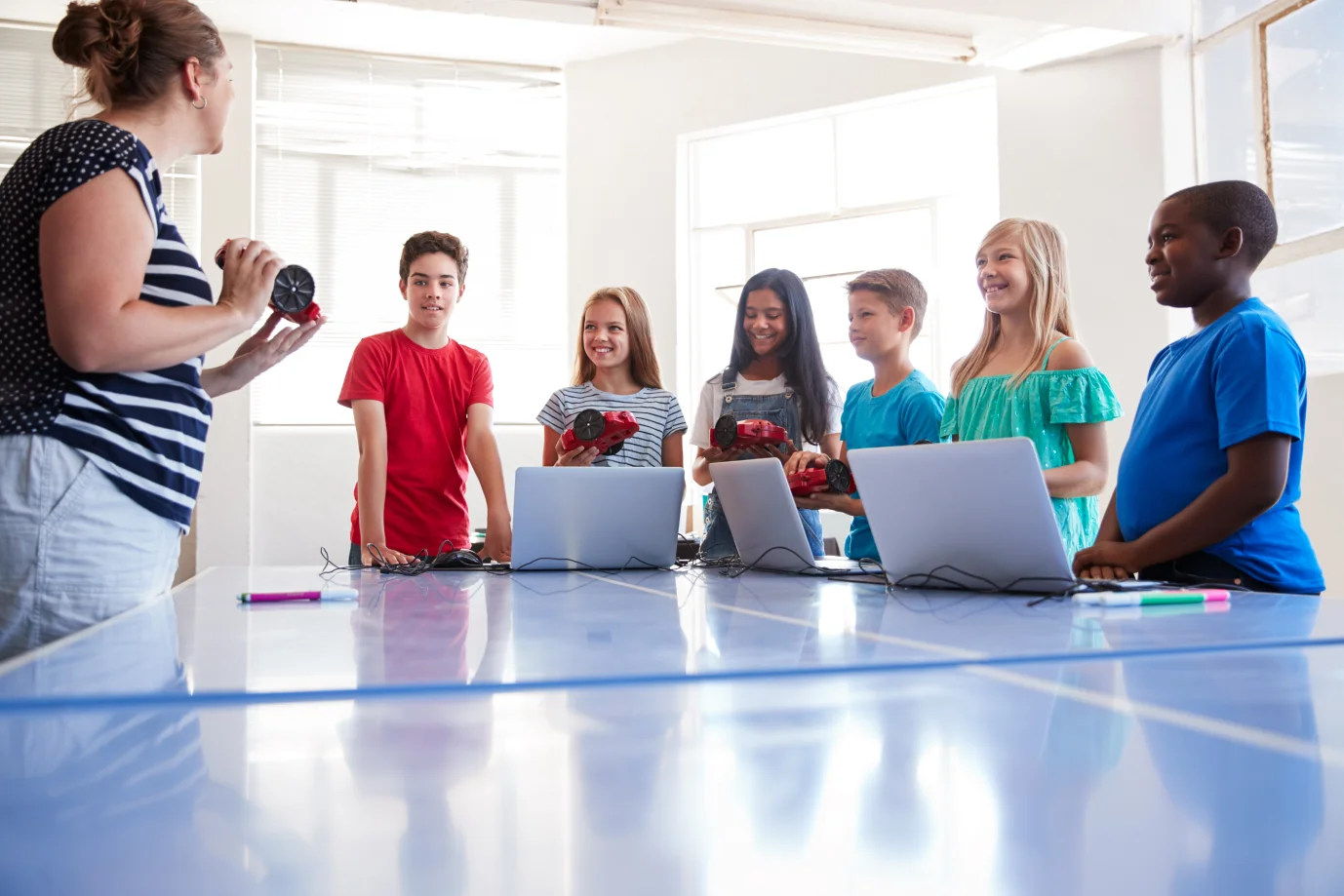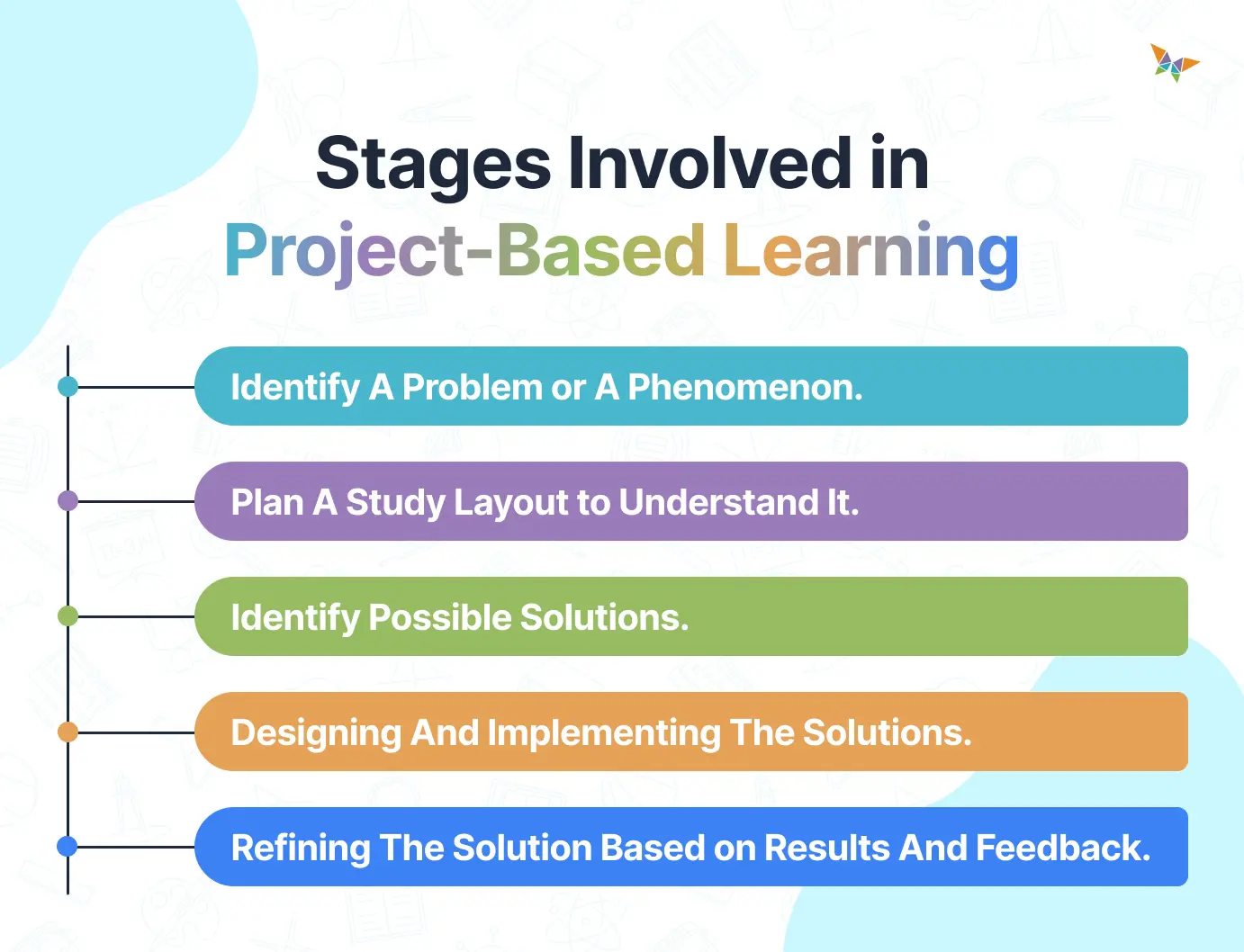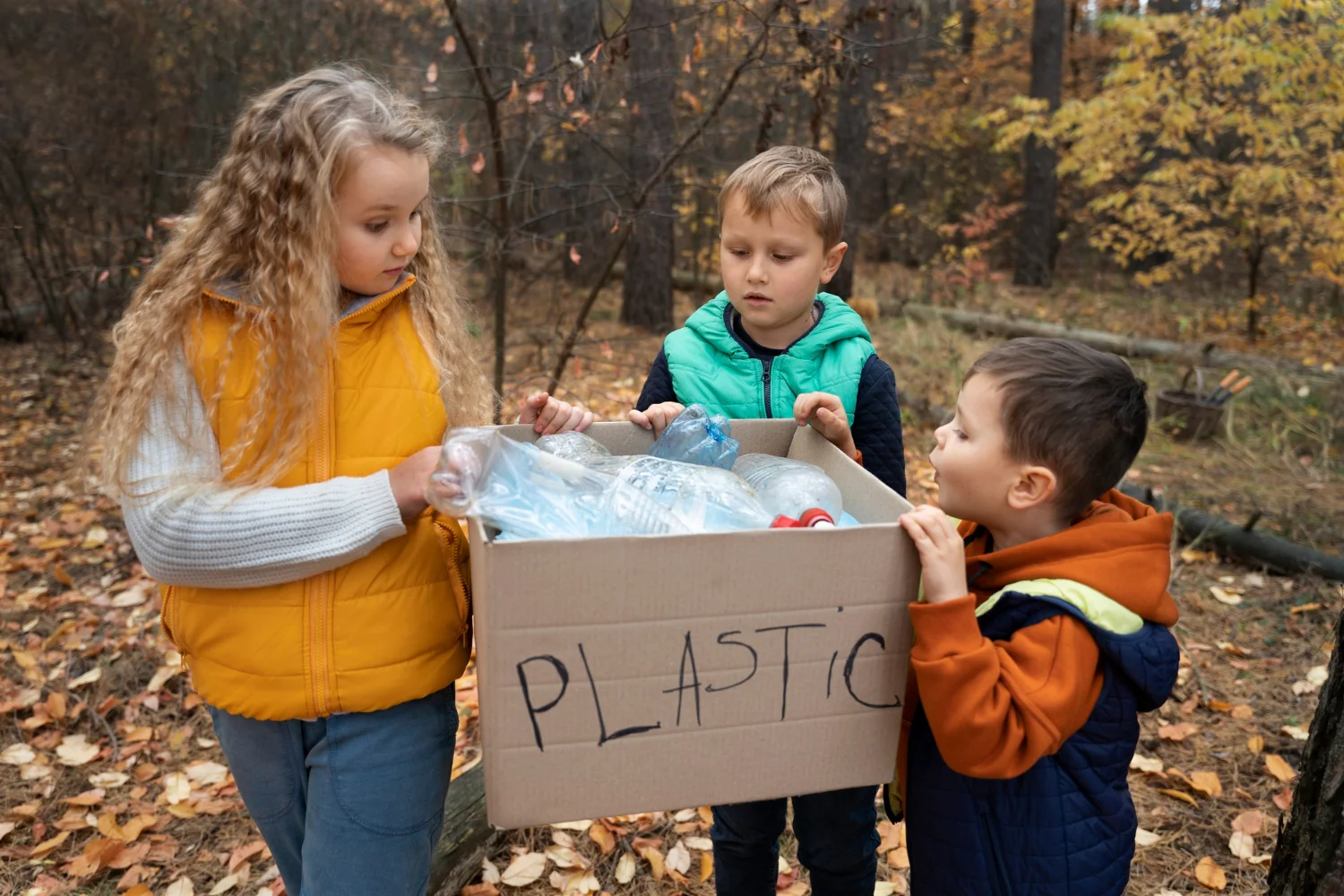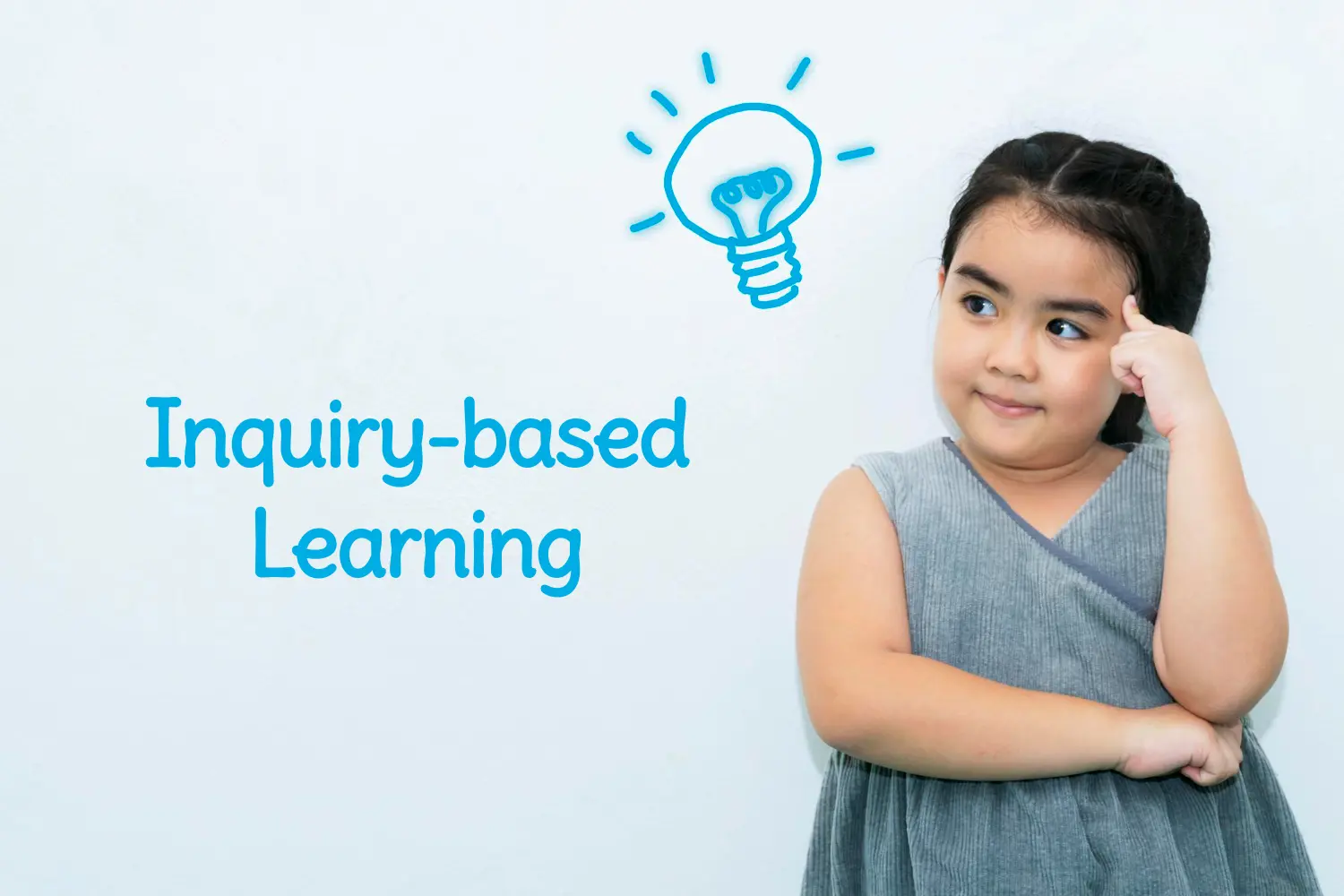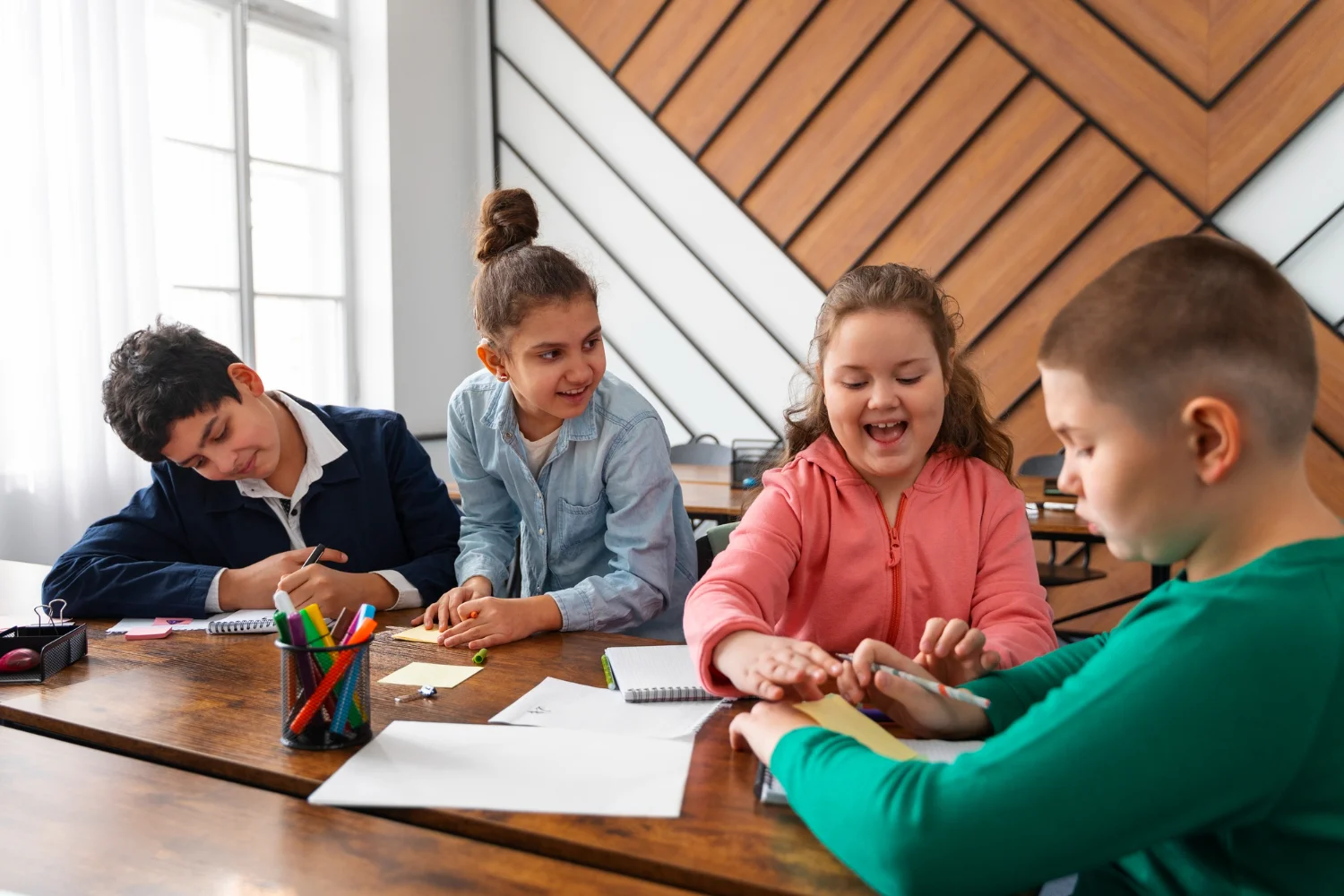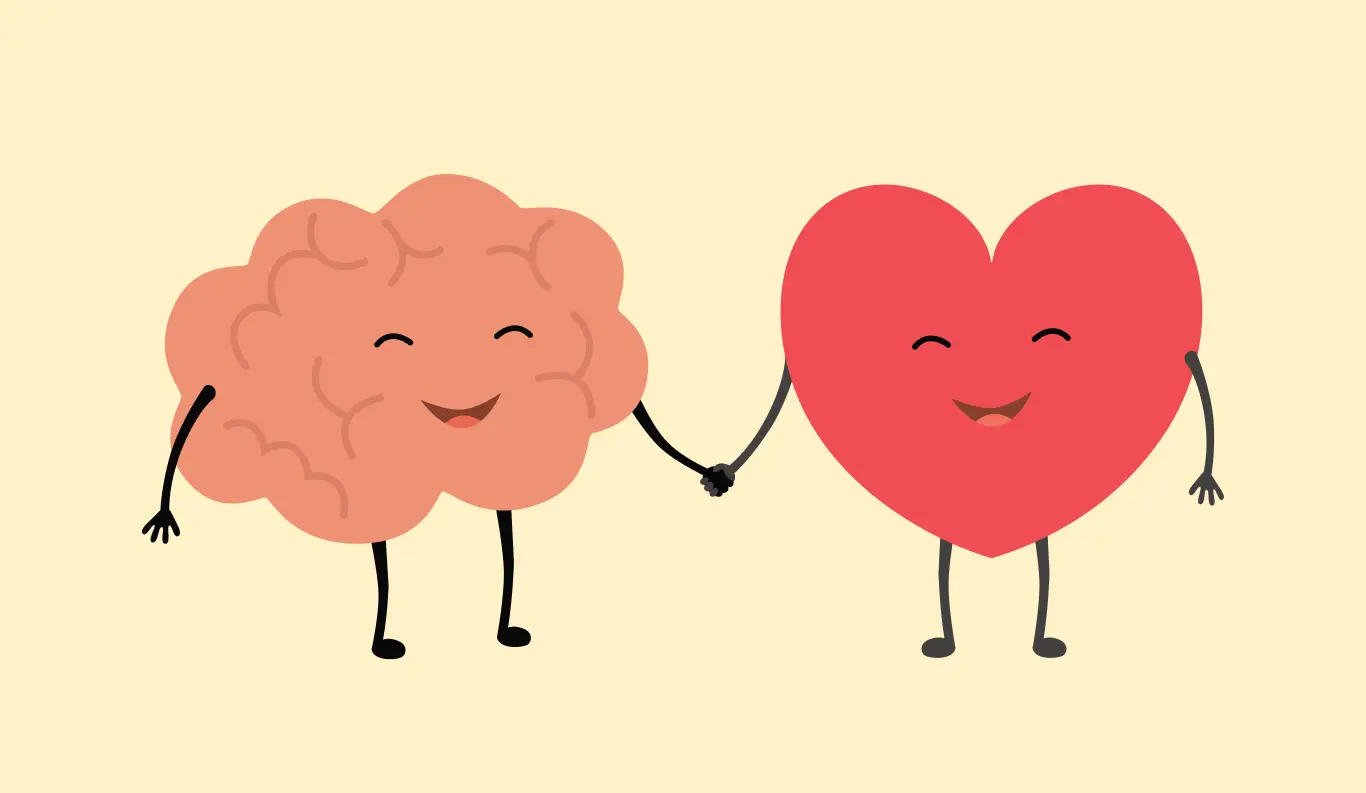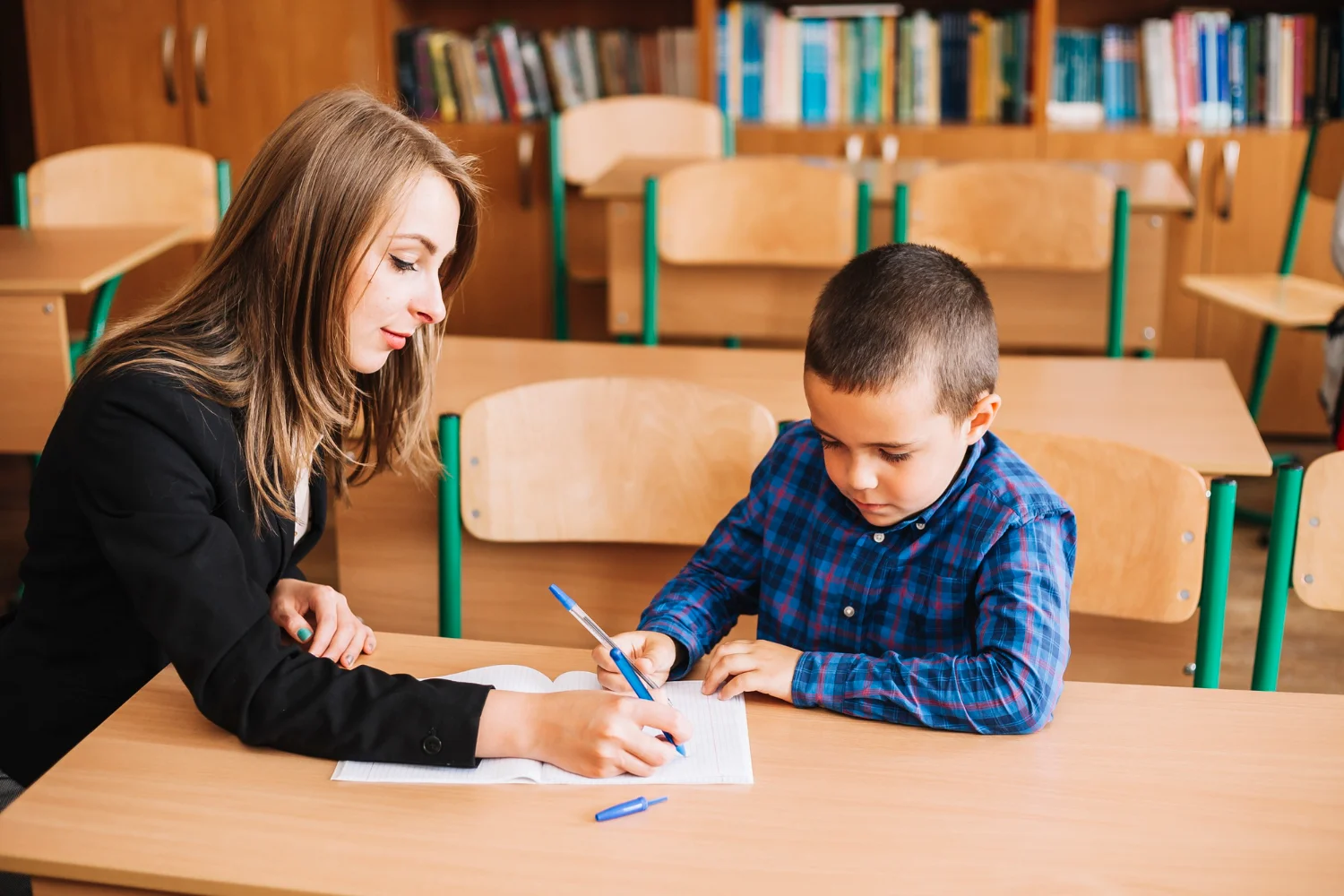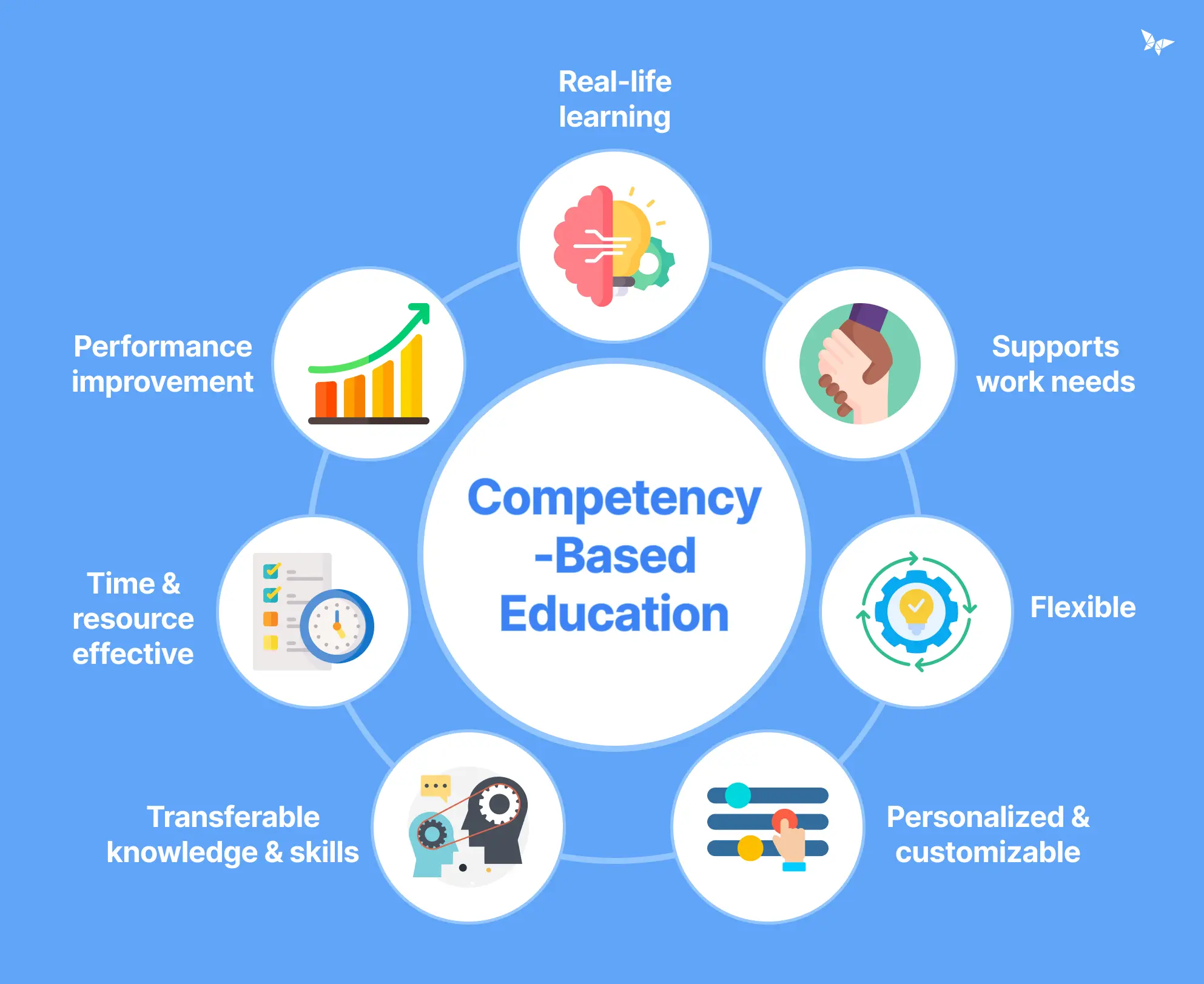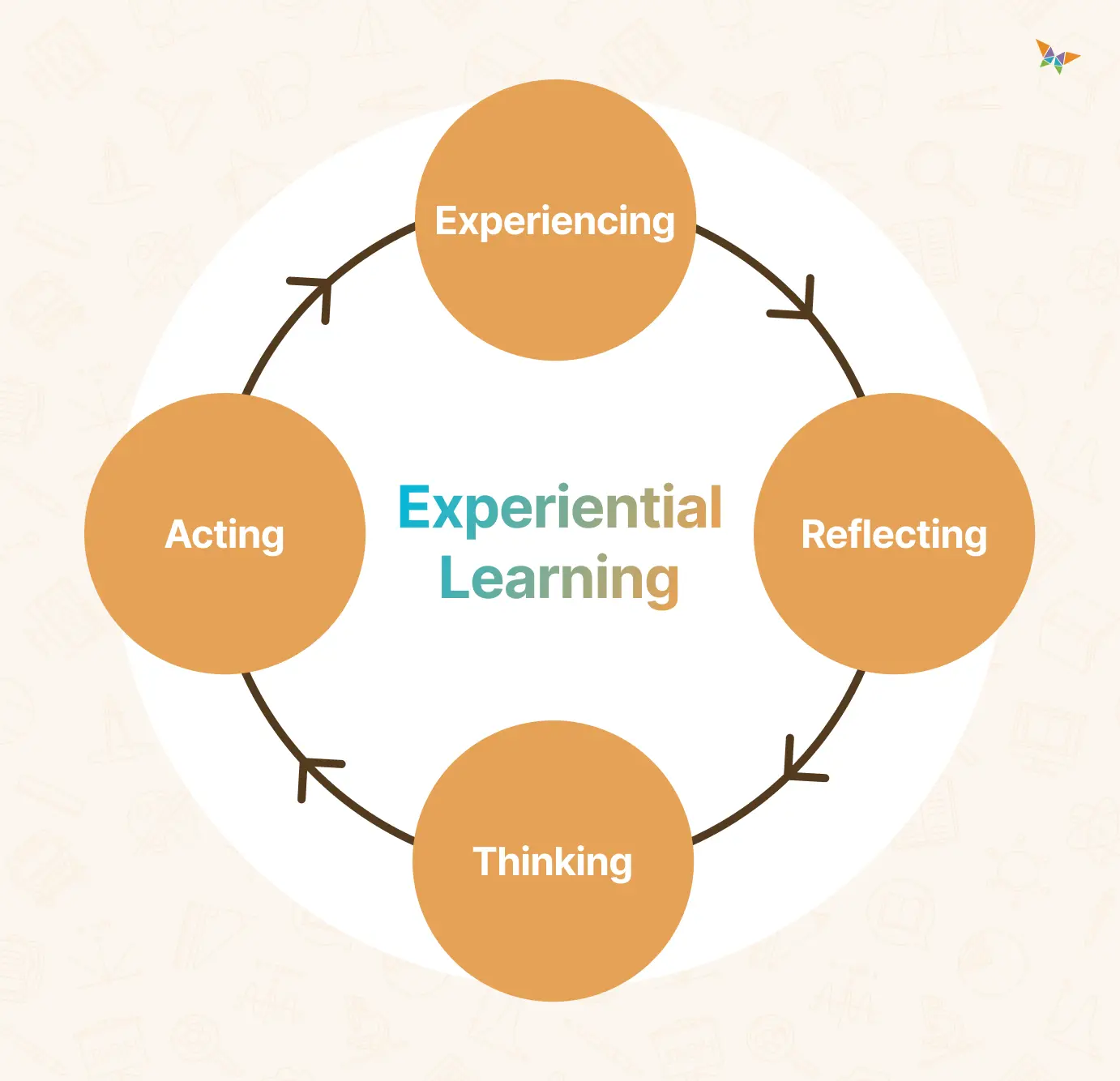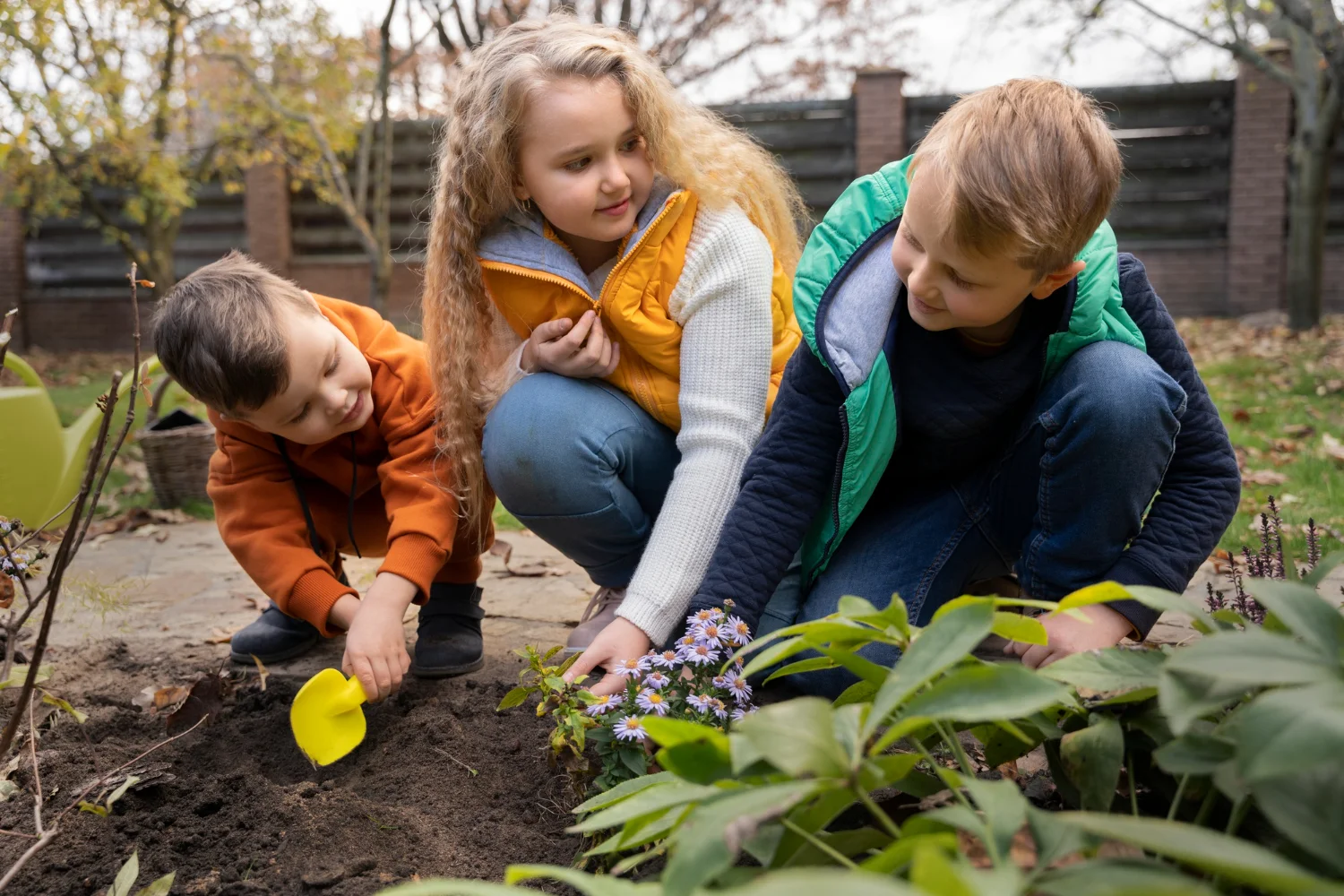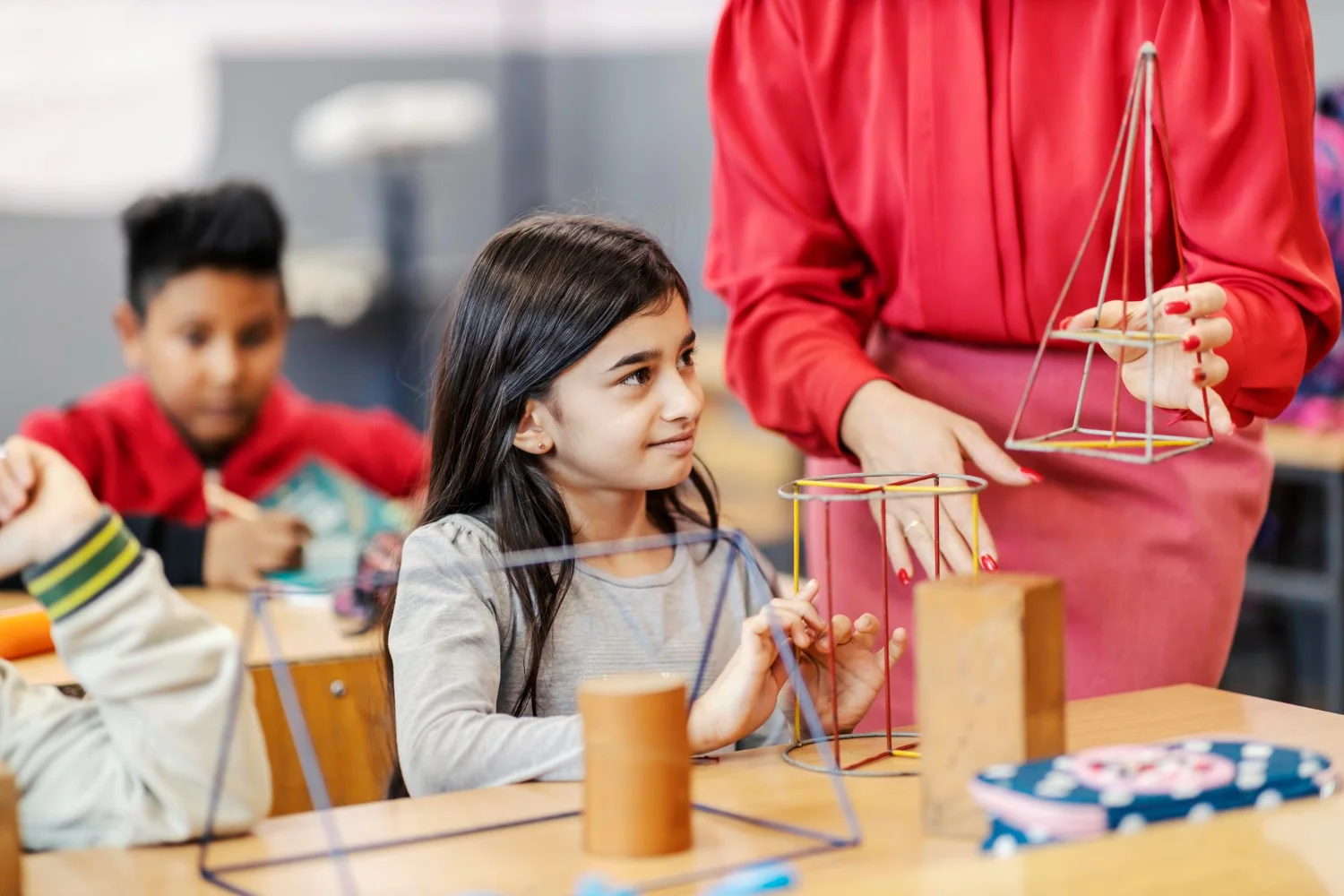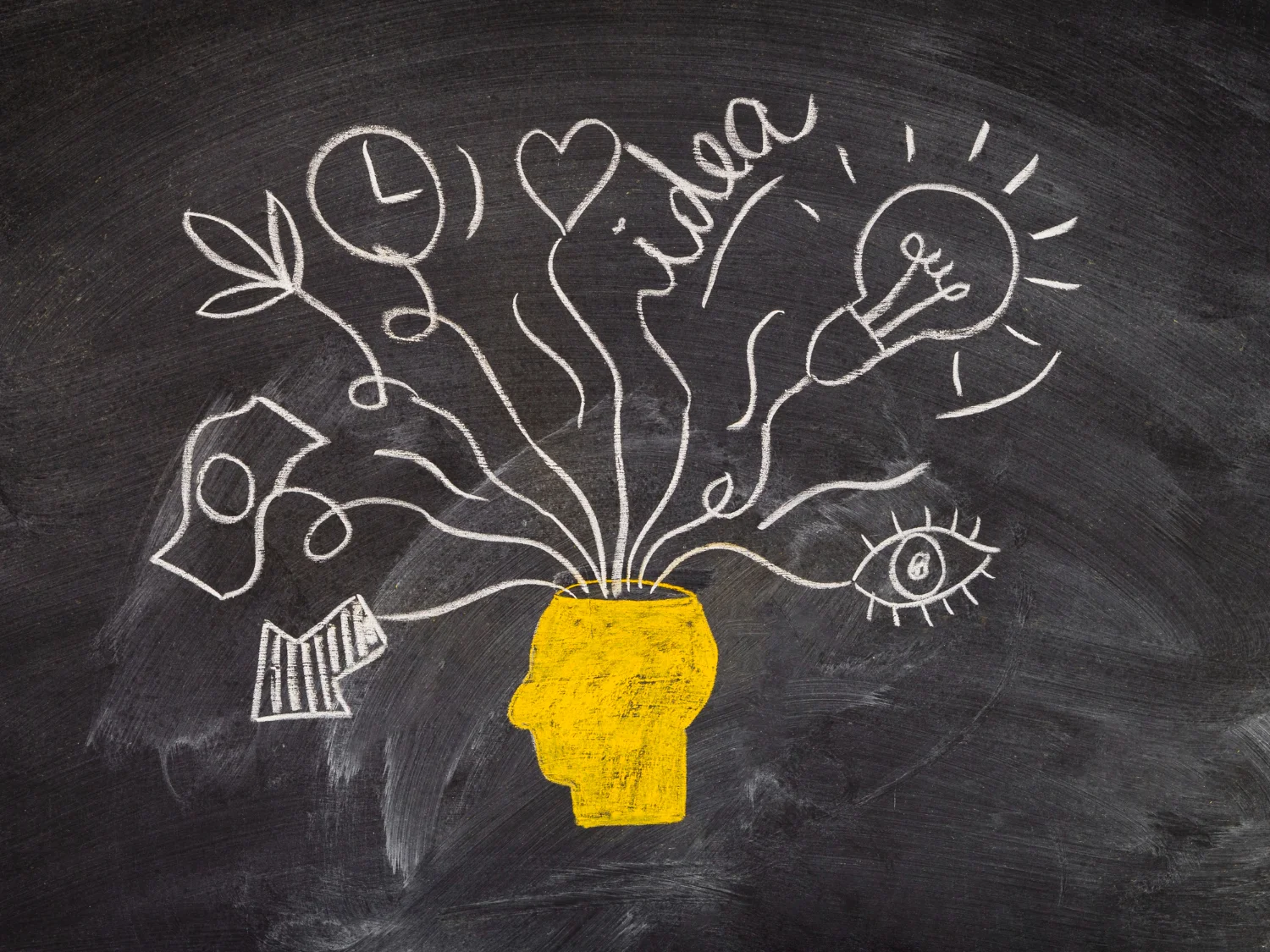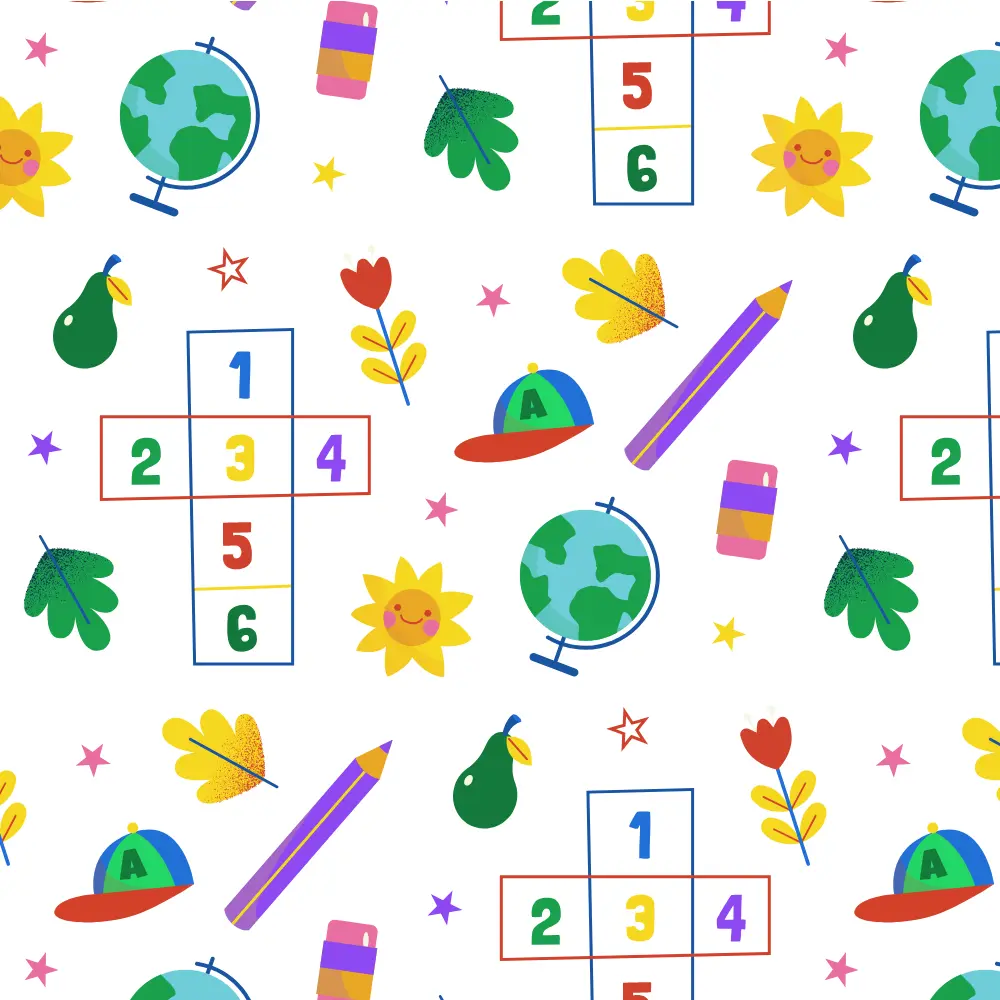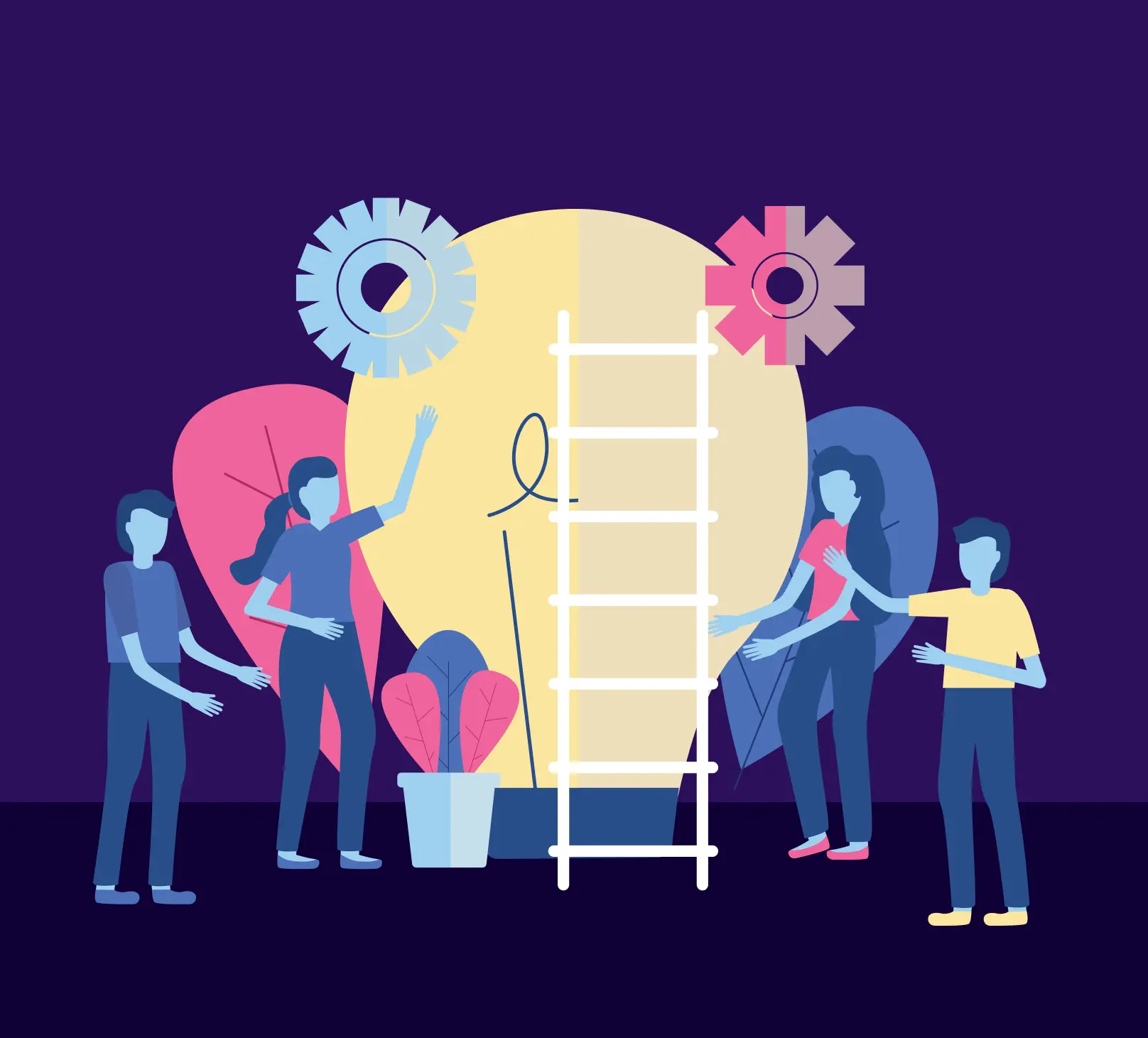Did you know that, according to a recent report by the World Economic Forum, around 69 million new jobs will be created by 2027? With such rapid changes coming, how do we, as teachers, ensure we’re effectively preparing our students for these new opportunities?
The answer lies in 21st-century Modern Teaching Methods.
Just as other professions have evolved to meet new demands, teaching has also transformed to keep pace with the changing world. Modern methods of teaching ensure that our teaching practices are as dynamic and forward-thinking as the world our students will enter. They are designed to address the skills and knowledge students need beyond the classroom.
For us as teachers, embracing these modern teaching methods means more than just staying current. These approaches can make our teaching more engaging and efficient, allowing us to connect with students in new ways.
They provide us with innovative tools and strategies to enhance our professional development. They simplify teaching and create a more interactive and rewarding teaching experience.
So, what exactly do we mean by modern teaching methods? Let’s dive in and explore how these innovative approaches are transforming education.
Modern methods of teaching are all about combining innovative techniques with educational tools to make learning interactive and effective. These methods focus on offering a diverse learning experience while remaining learner-centric.
They do not stop there! Modern methods of teaching also foster holistic development in learners. They cover developing critical thinking, leadership qualities, emotional intelligence, cultural sensitivity, social-emotional learning, and similar areas.
Instead of taking the traditional lectures and textbooks route, modern teaching methods employ various innovative methodologies to keep students engaged and learning actively. Some of them are blended learning, flipped classrooms, project-based learning, and other similar methods.
But what ties these methods together and qualifies them as modern?
What makes a teaching method ‘modern’?
Let’s get the answer to this by learning about the characteristics of 21st-century modern teaching methods in the next section.
The characteristics of modern teaching are distinctly unique, giving it its place in the current teaching-learning process. Understanding them allows you to reflect on your current teaching methodology.
Here are some of the most vital characteristics of Modern methods of teaching that differentiate them from their traditional counterparts:
1. Student-Centered Teaching
Just as the name suggests, modern teaching methods keep students at the center. In traditional teaching, the teacher is the primary source of information and decision-making. In contrast, 21st-century modern teaching methods factor in students' choices and preferences in learning.
This means that you, as a teacher, need to constantly ensure that you are delivering your lessons in a way that aligns with your students' strengths and interests. For example, if your students are visual learners, you might use more videos and infographics in your lessons.
You can do this by encouraging active classroom participation, seeking regular feedback, and evaluating and reflecting on your teaching methods. Let’s move on to the next characteristics of modern teaching methods.
2. Technology Integration
Modern teaching is marked by its interactive nature. The use of the latest educational technology in the classroom plays a crucial role here. These include devices like interactive whiteboards, AR/VR sets, educational apps, and other similar forms of technology.
There are a variety of technologies and tools that you can use in your classroom. For example, playing video on the screen or a podcast for those who learn best by listening. Thus you can understand the importance of modern teaching methods and how important it is to incorporate them into your practice.
3. Critical Thinking
Fostering critical thinking and problem-solving are core focus areas of modern methods of teaching.
To do this, you would encourage students to think critically by analyzing information, asking questions, and applying their knowledge to solve problems.
You would not give them regular problems but problems based on real-world situations.
4. Inclusive Education
21st-century modern teaching methods are inclusive in nature. This means that irrespective of your students’ backgrounds, capabilities, and learning styles, they should all be able to learn and grow to their full potential.
As a modern teacher, you need to employ diverse teaching and communication strategies that cater to different learners to facilitate this. The importance of modern teaching methods lies in their ability to create an equitable and dynamic learning environment that supports every student's success.
5. Interdisciplinary Approach
The interdisciplinary approach is another crucial aspect of modern teaching methods.
Modern teaching methods aim to give learners a holistic experience. This means you will encourage your students to connect the dots between different subjects and topics. Thus, improving their understanding and application of concepts.
For example, a project that combines science and history might involve students researching ancient civilizations' technological advancements and then constructing models based on their findings. This not only deepens their knowledge of both subjects but also shows how interconnected different fields of study can be.
Alright, now that we understand the characteristics that make a teaching method modern, let’s learn about some of these methods.
In this section, we dive into fifteen popular 21st-century modern teaching methods that are transforming classrooms and shaping the future of learning.
Modern Teaching Method #1: Flipped Classroom
Have you ever felt that the entire time of your class got over in just delivering your lecture? Then, a Flipped Classroom is the answer for you.
So, what is a Flipped Classroom?
It flips the traditional teaching approach. Instead of lecturing in class, you encourage students to complete their readings and watch instructional videos at home. This way, when they come to the classroom, they are already prepared to engage in deeper discussions and activities with your guidance.
Here’s How It Works:
- At Home: Students watch video lectures, read materials, and complete preliminary assignments to understand the basic concepts.
- In Class: The classroom time is used for discussions, problem-solving, group activities, and hands-on projects. This allows you to guide students through their thought processes, answer questions, and provide individualized support.
The impact of the Flipped Classroom method includes:
- Enhanced Student Engagement
Students come to class ready to participate and apply what they've learned.
- Improved Critical Thinking and Analytical Skills
Classroom time is used for higher-order thinking activities.
- Personalized Learning
Students can learn at their own pace, revisiting complex topics as needed.
Modern Teaching Method #2: Blended Learning
Technology offers so many innovative approaches to teaching. Have you ever wished you could combine the best of both worlds—traditional teaching and digital tools? Then you need to know about Blended Learning.
But, what is Blended Learning?
Blended Learning combines traditional face-to-face instruction with online learning activities. With this method, you can offer an integrated learning experience where diverse needs are met.
Due to this benefit, this method of teaching has become a go-to for modern teachers.
Here’s How It Works:
- Face-to-Face Component: Students attend regular classes where they receive direct instruction, engage in discussions, and participate in hands-on activities and experiments.
- Online Component: Students also engage with digital resources such as video lectures, interactive simulations, and online discussions. These activities can be done in the classroom, during designated computer lab times, or even integrated into homework assignments.
The impact of the Blended Learning method includes:
- Flexibility in Learning
Students benefit from a variety of learning methods, accommodating different learning styles and paces.
- Increased Access to Resources:
The online component allows students to access a wide range of materials and resources that might not be available in a traditional classroom.
- Enhanced Teacher-Student Interaction
You can use classroom time for more personalized instruction and support. This way, you can address individual student needs more effectively.
Modern Teaching Method #3: Gamification
Have you ever wished your students were as excited about learning as they are about playing games? Gamification might be the approach you're looking for.
So, what is Gamification?
It involves applying game-design elements and principles in non-game contexts, like your classroom. This modern method of teaching aims to make learning more engaging and enjoyable by incorporating game elements such as points, badges, leaderboards, and challenges.
Here’s How It Works:
- Setting Goals: Design your games to align with curriculum objectives, ensuring each activity reinforces the learning goals.
- Offering Friendly Challenges: Create lessons and activities as friendly challenges or quests, ensuring competition remains healthy and respectful.
- Rewarding Success: Provide meaningful rewards that genuinely motivate and encourage students, reinforcing their learning efforts.
- Adapting Approaches: Continuously adjust your approach based on student feedback and performance to keep the method effective.
- Ensuring Inclusivity: Ensure all students have the opportunity to participate and succeed, making the game accessible to everyone.
The impact of the Gamification method includes:
- Increased Motivation
The use of rewards and recognition boosts students' motivation and enthusiasm for learning.
- Enhanced Engagement
The game-like environment keeps students engaged and actively participating in their education.
- Improved Retention
The interactive and fun nature of gamification helps students retain information better and develop a love for learning.
Modern Teaching Method #4: Project-based Learning
Ever wondered how to make your lessons more hands-on and relevant to real-world scenarios? Then, Project-based Learning is the answer for you.
So, what is Project-based Learning?
Project-based Learning aims to engage students by encouraging them to work on challenges based on real-world problems. It enhances their skills and knowledge through exploration and investigation.
By working on extended projects that are meaningful and relevant, students gain a deeper understanding of the subject matter.
Here’s How It Works:
- Defining the Project: Select projects that align with your curriculum objectives, ensuring each project supports the learning goal.
- Engaging in Inquiry: Students engage in research and inquiry, asking questions and exploring solutions to real-world problems.
- Collaborating and Creating: Students work collaboratively to create a final product or presentation, allowing them to apply their knowledge in a practical and meaningful way.
- Reflecting and Assessing: Provide opportunities for students to reflect on their learning process and assess both their work and that of their peers.
- Showcasing the Work: Ensure that projects are shared with a broader audience, giving students the chance to present their work and receive feedback.
The impact of the Project-based Learning method includes:
- Enhanced Critical Thinking
Students develop critical thinking and problem-solving skills by addressing real-world challenges.
- Improved Collaboration
Working on projects encourages teamwork and collaboration among students.
- Increased Engagement
The relevance and authenticity of the projects keep students engaged and motivated to learn.
- Practical Application
Students apply their knowledge in meaningful ways in real life. This prepares them for future academic and career success, underscoring the importance of modern teaching methods in equipping students for real-world applications.
Modern Teaching Method #5: Spaced Learning
Do you feel that your students are struggling to retain information? Then, Spaced Learning could be the turning point for your classroom.
So, what is Spaced Learning?
Spaced Learning is an instructional modern method of teaching that involves breaking up information into short, focused sessions with intervals of rest or different activities in between. This method leverages the spacing effect, which helps improve memory retention and understanding by revisiting the material at spaced intervals.
Here’s How It Works:
- Breaking Up Lessons: Divide the lesson content into short, focused sessions, each lasting about 10-20 minutes.
- Inserting Intervals: Between these sessions, include brief intervals of activities, such as quizzes or games.
- Repeating Key Concepts: Go back after the interval and repeat the key concepts. You can do across multiple sessions, allowing students to revisit and reinforce their understanding.
- Incorporating Active Learning: Use interactive and engaging activities during the sessions to enhance understanding and retention.
- Assessing Progress: Regularly assess students' understanding and retention of the material, providing feedback and additional practice as needed.
The impact of the Spaced Learning method includes:
- Enhanced Retention
Revisiting material at spaced intervals helps students retain information more effectively over the long term.
- Improved Focus
Short, focused sessions with breaks in between keep students' attention and reduce cognitive overload.
- Better Understanding
Repeated exposure to key concepts allows for deeper understanding and consolidation of knowledge.
Modern Teaching Method #6: Service Learning
Are you looking for a way to make learning more meaningful and impactful at the same time? Service Learning might be exactly what you need.
So, what is Service Learning?
Service Learning is a modern method of teaching that integrates meaningful community service with instruction and reflection. This method enriches learning by encouraging students to apply academic skills to solve real-world problems while fostering a sense of civic responsibility and community engagement.
Here’s How It Works:
- Identifying Community Needs: Collaborate with students to identify real community needs that align with curriculum objectives.
- Planning the Project: Develop a service project that addresses these needs, incorporating relevant academic skills and knowledge.
- Engaging in Service: Students actively participate in the service project, applying what they've learned in the classroom to benefit the community.
- Reflecting on the Experience: After completing the project, students reflect on their experiences, discussing what they learned and how they contributed to the community.
- Integrating Learning: Connect the service experience back to academic content, reinforcing the relationship between classroom learning and real-world application.
The impact of the Service Learning method includes:
- Enhanced Academic Understanding
Applying academic skills to real-world problems deepens students' understanding of the subject matter.
- Increased Civic Engagement
Students develop a sense of civic responsibility and community engagement through active participation in service projects.
- Improved Social Skills
Working on community projects enhances students' teamwork, communication, and problem-solving skills.
- Greater Motivation
Connecting learning to meaningful service activities increases students' motivation and engagement in their education.
Modern Teaching Method #7: Inquiry-based Learning
Have you ever thought about sparking more curiosity and independent thinking in your students? Then, Inquiry-based Learning is the answer for you.
So, what is Inquiry-based Learning?
Inquiry-based Learning is a modern teaching method that encourages students to explore and investigate questions, problems, or scenarios.
This approach promotes active learning by empowering students to seek answers and develop understanding through inquiries. By engaging in this method, students enhance their critical thinking and problem-solving skills by drawing real-life evidence to find answers to questions.
Here’s How It Works:
- Starting with a Question: Begin with a thought-provoking question or problem that aligns with your curriculum objectives. This question should inspire curiosity and drive the learning process.
- Researching and Exploring: Students conduct research, gather information, and explore various resources to answer the question or solve the problem.
- Analyzing and Synthesizing: Encourage students to analyze the information they have gathered and synthesize their findings to develop a deeper understanding of the topic.
- Presenting Findings: Students present their conclusions through reports, presentations, or projects, allowing them to communicate their learning effectively.
- Reflecting on the Process: Provide opportunities for students to reflect on their inquiry process, discussing what they learned and how they approached the investigation.
The impact of the Inquiry-based Learning method includes:
- Enhanced Critical Thinking
Students learn to ask questions, seek answers, and think critically about information.
- Improved Research Skills
Students develop valuable research skills as they gather and evaluate information from various sources.
- Greater Engagement
The investigative nature of inquiry-based learning keeps students engaged and motivated to learn.
- Independent Learning
Students take ownership of their learning, fostering independence and self-directed study habits.
Modern Teaching Method #8: Collaborative Learning
Do you feel students could benefit more from learning with and from each other? Then Collaborative Learning is the answer for you.
So, what is Collaborative Learning?
Collaborative Learning is a teaching method that involves students working together in small groups to achieve a common goal. This approach encourages students to share ideas, solve problems collectively, and learn from one another, fostering a sense of community and cooperation.
Here’s How It Works:
- Forming Groups: Organize students into small, diverse groups that will work together throughout the project or activity.
- Assigning Roles: Assign specific roles to each group member to ensure everyone participates and contributes equally.
- Facilitating Interaction: Encourage open communication and idea-sharing among group members, guiding them to work together effectively.
- Monitoring Progress: Regularly check in with groups to monitor their progress, provide feedback, and address any challenges they encounter.
- Reflecting on Collaboration: Provide opportunities for students to reflect on their group work, discussing what they learned and how they collaborated.
The impact of the Collaborative Learning method includes:
- Improved Social Skills
Students develop essential social skills, including communication, negotiation, and conflict resolution.
- Enhanced Understanding
Working in groups allows students to gain diverse perspectives and a deeper understanding of the subject matter.
- Stronger Community
Collaborative activities foster a sense of community and cooperation among students, creating a positive learning environment.
Modern Teaching Method #9: Mindfulness and Social-Emotional Learning (SEL)
As a 21st-century teacher, helping your students develop emotional intelligence and resilience alongside their academic skills is equally important. For this, Mindfulness and Social-Emotional Learning is what you need.
So, what is Mindfulness and Social-Emotional Learning?
Mindfulness and SEL are educational approaches that focus on developing students' emotional and social skills. These methods encourage self-awareness, self-regulation, empathy, and effective communication, fostering a supportive and positive classroom environment.
Here’s How It Works:
- Practicing Mindfulness: Incorporate mindfulness exercises such as deep breathing, meditation, and mindful listening to help students stay present and manage stress.
- Building Self-Awareness: Engage students in activities that promote self-reflection, helping them understand their emotions, strengths, and areas for growth.
- Developing Self-Regulation: Teach techniques for managing emotions, setting goals, and maintaining focus and self-control.
- Enhancing Social Skills: Facilitate activities that encourage teamwork, empathy, and effective communication, helping students build strong relationships.
- Fostering a Positive Environment: Create a classroom culture that values respect, kindness, and emotional support, ensuring all students feel safe and valued.
The impact of the Mindfulness and SEL method includes:
- Improved Emotional Regulation
Students learn to manage their emotions effectively, leading to reduced stress and improved focus.
- Enhanced Self-Awareness
Activities that promote self-reflection help students understand their emotions and behaviors.
- Stronger Social Skills
Students develop empathy, communication, and teamwork skills, fostering positive relationships.
- Positive Classroom Environment
A focus on respect and kindness creates a supportive and inclusive classroom atmosphere, enhancing overall learning.
Modern Teaching Method #10: Personalized Learning
Do you ever wish you could tailor your lessons to meet each student's unique needs and pace? If so, Personalized Learning is the answer.
So, what is Personalized Learning?
It is an instructional approach that aims to customize learning based on individual students' strengths, needs, skills, and interests. This method of teaching encourages students to have a more active role in their education. It helps them learn at their own pace and in ways that are most effective for them.
Here’s How It Works:
- Assessing Individual Needs: Begin by assessing each student's abilities, learning styles, and interests to understand their unique needs.
- Setting Personalized Goals: Work with students to set individual learning goals that are tailored to their specific needs and aspirations.
- Designing Customized Learning Paths: Create learning plans that allow students to progress at their own pace, using a variety of instructional methods and materials.
- Providing Ongoing Support: Offer continuous feedback and support, adjusting learning plans as needed to ensure each student is making progress.
- Reflecting on Learning: Encourage students to reflect on their learning experiences, helping them to understand their progress and identify areas for improvement.
The impact of the Personalized Learning method includes:
- Enhanced Student Engagement
Students are more motivated and engaged when learning activities are tailored to their interests and needs.
- Improved Academic Performance
Personalized instruction helps students master concepts at their own pace, leading to better academic outcomes.
- Greater Student Autonomy
Students take an active role in their education, developing self-directed learning skills.
- Better Teacher-Student Relationships
You can build stronger relationships with students by understanding and addressing their unique needs and goals.
Modern Teaching Method #11: Competency-based Learning
Don’t we, as teachers, always want our students to grasp the foundational knowledge of a topic before moving on to the next one?
But many a times, that does not happen. Well, Competency-based Learning is the solution here.
So, what is Competency-based Learning?
Competency-based Learning is a teaching methodology where students progress based on their ability to demonstrate mastery of specific skills and competencies.
This method highlights the importance of modern teaching methods by focusing on ensuring that students achieve clear, measurable learning outcomes, rather than simply completing curriculum goals. Here, progress is based on the students’ current knowledge and capabilities.
Here’s How It Works:
- Identifying Competencies: Define clear, specific competencies that students need to master, aligning them with curriculum standards and learning goals.
- Creating Personalized Learning Plans: Develop individualized learning plans that allow students to work on the competencies at their own pace.
- Providing Varied Learning Resources: Offer a range of instructional materials and activities tailored to different learning styles and needs, ensuring all students have the resources they need to succeed.
- Assessing Mastery: Use formative and summative assessments to evaluate students' mastery of the competencies, providing ongoing feedback and support.
- Allowing Flexible Progression: Allow students to advance once they have demonstrated mastery, rather than requiring them to progress according to a fixed schedule.
The impact of the Competency-based Learning method includes:
- Personalized Learning Pace
Students can progress at their own pace, ensuring they fully understand each concept before moving on.
- Clear Learning Outcomes
Focus on specific competencies helps students understand what they need to learn and achieve.
- Enhanced Student Accountability
Students take responsibility for their own learning, leading to increased motivation and engagement.
- Improved Skill Mastery
The emphasis on mastery ensures that students develop a deep, comprehensive understanding of each competency.
Modern Teaching Method #12: Experiential Learning
How often have you taught a lesson only to wonder if your students can truly grasp the concepts? This is where Experiential Learning enters and makes all the difference.
What is Experiential Learning?
Experiential Learning is a teaching methodology where students learn by engaging in direct experiences and reflecting on them.
This method encourages active participation, allowing students to apply their knowledge and skills in real-world contexts. In this method of teaching, learning happens by doing.
Here’s How It Works:
- Engaging in Direct Experiences: Students participate in hands-on activities, simulations, or real-world projects that relate to the subject matter.
- Reflecting on Experiences: After completing the activity, students reflect on their experiences to deepen their understanding and draw connections to theoretical concepts.
- Applying Knowledge: Students apply what they have learned to new situations, reinforcing their knowledge and skills.
- Receiving Feedback: Provide continuous feedback throughout the process, helping students understand their strengths and areas for improvement.
- Revisiting and Revising: Encourage students to revisit and revise their work based on feedback and reflection, promoting continuous learning and improvement.
The impact of the Experiential Learning method includes:
- Enhanced Understanding
Hands-on experiences help students grasp complex concepts by applying them in real-world contexts.
- Increased Engagement
Active participation keeps students motivated and engaged in their learning.
- Improved Critical Thinking
Reflecting on experiences encourages students to think critically about what they have learned and how they can apply it.
- Practical Skill Development
Students develop practical skills that are transferable to real-life situations, preparing them for future academic and career success.
Modern Teaching Method #13: Problem-based Learning
Want your students to become future Elon Musk or Sunita Williams? Then, you must hone their better problem-solving skills. For this, Problem-based Learning is the teaching methodology you need.
What is Problem-based Learning?
Problem-based Learning is a teaching methodology where students learn by solving complex, real-world problems. This approach encourages critical thinking, creativity, and collaboration, as students must research, hypothesize, and apply their knowledge to find solutions.
Here’s How It Works:
- Presenting the Problem: Introduce a complex, real-world problem that aligns with your curriculum objectives. The problem should be open-ended, allowing for multiple solutions.
- Facilitating Inquiry: Guide students as they ask questions, conduct research, and gather information related to the problem.
- Encouraging Collaboration: Have students work in small groups to discuss their findings, share ideas, and develop potential solutions.
- Implementing Solutions: Students create and implement a plan to solve the problem, applying their knowledge and skills in practical ways.
- Reflecting on Learning: After solving the problem, encourage students to reflect on their process, discussing what they learned and how they can apply these skills in the future.
The impact of the Problem-based Learning method includes:
- Enhanced Critical Thinking
Students develop critical thinking and analytical skills by exploring and solving complex problems.
- Improved Collaboration
Working in groups fosters teamwork and communication skills, preparing students for collaborative work environments.
- Practical Application
Students apply their knowledge in practical, meaningful ways, preparing them for future academic and career challenges.
Modern Teaching Method #14: Crossover Learning
Looking for a way to help your students see the practical side of what they learn in the classroom? Crossover Learning might be the perfect approach.
So, what is Crossover Learning?
Crossover Learning is a targeted teaching methodology that integrates classroom learning with real-world experiences. This method empowers students to investigate concepts in diverse environments. This solidifies their understanding and makes learning applicable and enjoyable.
Unlike traditional field trips or visits, crossover learning involves continuous integration of experiences and reflections between the classroom and external environments.
Here’s How It Works:
- Creating Connections: Design activities that link classroom content with real-world experiences. This could involve field trips, museum visits, or community projects that relate to the subject matter.
- Encouraging Exploration: Provide opportunities for students to explore and investigate these real-world contexts, gathering information and insights.
- Facilitating Reflection: After the informal learning experience, guide students to reflect on their observations and connect them back to the classroom content.
- Integrating Learning: Use the insights gained from informal experiences to enhance and enrich classroom discussions and activities.
- Sharing Experiences: Encourage students to share their experiences and insights with their peers, fostering a collaborative learning environment.
The impact of the Crossover Learning method includes:
- Deeper Understanding
Real-world contexts help students understand and retain information more effectively.
- Increased Motivation
Informal learning experiences motivate students to engage more deeply with the subject matter.
- Improved Reflection Skills
Reflecting on informal experiences helps students develop critical thinking and analytical skills, enhancing their overall learning.
Modern Teaching Method #15: Kinesthetic Learning
Have you ever considered engaging your students through movement and hands-on activities? Kinesthetic Learning might be the perfect method for this.
So, what is kinesthetic Learning?
Kinesthetic Learning is a method of teaching that emphasizes physical activities to help students grasp concepts and retain information. This method engages students by incorporating movement, hands-on tasks, and tactile experiences, making learning more dynamic and interactive.
Here’s How It Works:
- Incorporating Movement: Design lessons that include physical activities, such as role-playing, building models, or conducting experiments, to reinforce learning objectives.
- Using Hands-On Materials: Provide tactile materials like manipulatives, craft supplies, or lab equipment that students can touch and manipulate to understand abstract concepts.
- Engaging Multiple Senses: Integrate activities that stimulate multiple senses, enhancing memory and comprehension through sensory experiences.
- Creating Interactive Lessons: Develop interactive lessons where students can physically move around the classroom or learning space, engaging in activities that require active participation.
- Facilitating Physical Expression: Encourage students to express their understanding through physical activities, such as acting out a scene, constructing a project, or participating in a physical challenge.
The impact of the kinesthetic learning method includes:
- Enhanced Retention
Physical activities and hands-on experiences help students retain information better by engaging multiple senses.
- Increased Engagement
Active participation keeps students more engaged and motivated, especially those who prefer movement-based learning.
- Improved Understanding
Manipulating materials and engaging in physical tasks help students grasp abstract concepts and complex ideas.
- Catered Learning Styles
This approach supports kinesthetic learners who thrive in dynamic, hands-on environments, ensuring they have equal opportunities to succeed.
Now, you must be thinking about what makes these modern teaching methods so impactful and beneficial. We have the answer to that!
Let's delve into the myriad advantages these innovative approaches bring to the classroom.
It's clear that modern approaches offer a fresh and dynamic way to engage students.
But what are the advantages of modern teaching methods? Why should you incorporate them into your teaching practice? In this section, we'll find out the importance of modern teaching methods for your classroom. So, read along!
1. Increase Cognitive Thinking Skills
Modern teaching methods emphasize critical thinking, problem-solving, and analytical skills.
Instead of merely memorizing facts, students are encouraged to understand and apply concepts. This prompts students to think deeply about real-world issues, fostering their ability to analyze and evaluate information.
2. Allow for Unique Learning Patterns
Every student learns differently, and modern teaching methods acknowledge this diversity.
Differentiated instruction tailors lessons to meet varied learning styles, whether visual, auditory, or kinesthetic. This flexibility ensures that each student can engage with the material in the way that suits them best for optimum learning.
3. Provide Application-Based Skill Building
Modern teaching promotes application-based learning and bridges the gap between theory and practice. Students gain hands-on experience that prepares them for real-life situations. It helps students see the practical applications of their knowledge.
4. Empower Students to Engage with Challenging Concepts
21st century modern teaching methods create a supportive environment where students feel empowered to tackle difficult subjects. They encourage inquiry-based learning, where students ask questions and seek answers. Thus fostering a deeper understanding.
5. Facilitate Real-World Connections
Modern teaching methods often involve connecting classroom learning with the world outside. Field trips, guest speakers, and community projects allow students to see the relevance of their studies in everyday life.
By integrating these, modern teaching methods create a more engaging, effective, and inclusive learning environment. This prepares students for the challenges and opportunities of the future.
Embracing 21st-century modern teaching methods is essential for you to stay relevant today. By adopting these approaches, you can enhance your teaching effectiveness. This proactive adaptation ensures that your students are better prepared for future challenges.
However, if you need help figuring out where to start or how to implement these techniques effectively, make sure to seek guidance. You can start right away by scheduling a free mentoring session with a Suraasa teaching career expert.
Book a session with a Suraasa mentor today and start learning right away!






